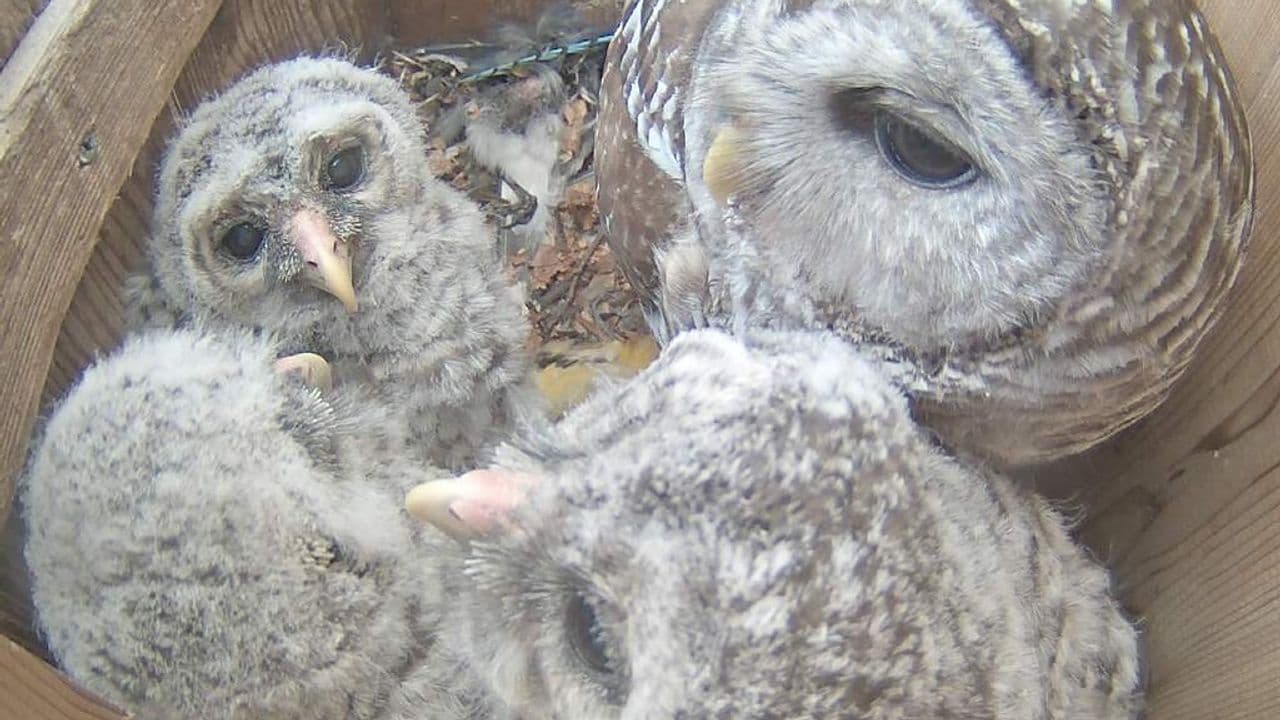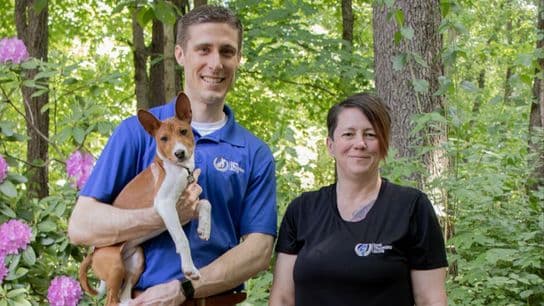Wild Birds Unlimited’s Nest Cam Gives Viewers Up-Close Glimpse into Lives of Owls
The live-streaming video reveals the daily lives of Barred Owls to viewers around the world
Every spring since 2010, Wild Birds Unlimited* Founder and CEO Jim Carpenter has switched on the camera outfitted to an owl nest box in his wooded backyard in Central Indiana and streamed the footage live on wbu.com through the spring and summer. This year is an especially exciting one, as the two Barred Owls—one male and one female—who have made Carpenter’s box their home prepare to welcome three hatchlings to the nest.
The female owl, now affectionately known by viewers as Mama Owl, laid three eggs in early March. The incubation period for owl eggs is typically about a month, so viewers can expect to see the hatchlings any day. The video stream will capture every moment of the hatchlings first season, as they won’t be big enough to leave the nest until late May. The young owls will stay together throughout the summer and are fed by their parents. Then, the young will strike out on their own in early fall when the parents slowly wean them from feedings.
Wild Birds Unlimited hosts the video stream in partnership with the Cornell Lab of Ornithology, who are actively engaging with the community of regular viewers.
“The viewing community has been very involved this year,” said Charles Eldermire, Cornell Lab of Ornithology’s Bird Cams Project Leader. “We’ve been keeping up a conversation via social media and sharing the best viewer contributions with the community.”
While the lab is not currently conducting a study involving the owls, Eldermire says the data stream may provide crucial insights for future studies.
“Like with most of our bird cams, outreach is the primary purpose,” Edlermire said. “But through that process, we often happen into interesting new insights. These recordings constitute a season-long record of activity, and that data could eventually become invaluable for someone researching Barred Owl nesting.”
This year, Carpenter installed a second camera to monitor the box from the outside. The new angle shows the adult owls leaving the nest to hunt and returning with their spoils, but Eldermire says the real attraction comes when the nestlings start taking an interest in the world outside their box.
“Right now, the second camera lets you see the comings and goings of the male and female owls, but when the owlets get older, they’ll start to spend time looking out into the world through the boxes opening,” Eldermire said.
Once the owlets are big enough to leave the nest—around four to five weeks after hatching—they will remain close to the box, exploring the branches of the nest tree until they are finally able to fly at around 10 weeks old, at which point the parents will begin to wean the fledglings off feedings and encourage them to take their first hunt.
“From the time the eggs are laid to when the youngsters leave the nest, every day is a thrill,” said Carpenter. “We spend a lot of time watching them, and even though I know it’s just a part of nature, it’s hard to see them go when they move out.”
The owls are not the first resident of Carpenter’s box, which is set more than 30 feet high against the trunk of a pignut hickory tree in his backyard. Since Carpenter first installed the box in 1998, it has been home to a series of animal occupants, including squirrels and raccoons. The owls, however, are year-round residents, and they are unlikely to give up their nest anytime soon.
Not that Carpenter, Eldermire or any of the live-stream viewers are hoping for a new occupant. Eldermire says the owls have proven to be consummately entertaining stars.
“They have been so fun and engaging,” he said. “Watching them hoot from up close—Barred Owls seem to have conversations, where one of the two hoots and the other responds. And I’m constantly amazed by the diversity of prey brought back to the box. Everything from fish, to crayfish to earthworms to small birds, mammals and amphibians. Their diet is so adaptable, it’s incredible.”
Carpenter says that entertainment value is not exclusive to experts like Eldermire. “It’s not just for bird and nature enthusiasts,” he said. “It’s enjoyable for families, and it’s a fun educational tool for teachers to use in their classrooms."
With more than 300 locations throughout the U.S. and Canada, Wild Birds Unlimited is the original and largest franchise system of backyard bird feeding and nature specialty stores. Recently ranked No. 2 overall and No. 1 in the Retail category on Franchise Business Review’s prestigious 2018 Franchisee Satisfaction Awards, there's no better time to join the Wild Birds Unlimited team. Click here to learn more.
*This brand is a paid partner of 1851 Franchise. For more information on paid partnerships please click here.













